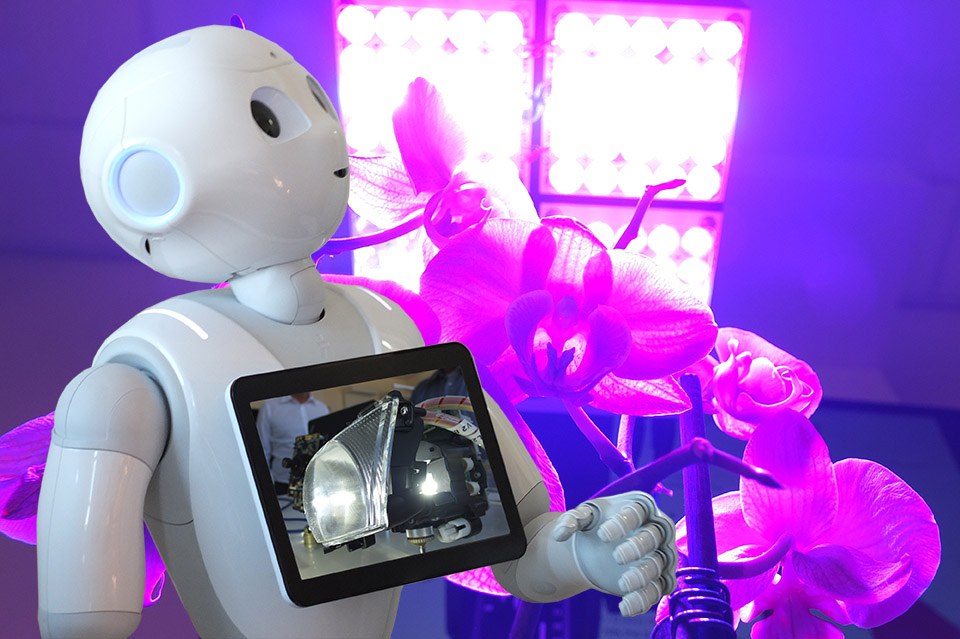LightSpeed Experience Center
On August 26th, 2016 the editors of LED professional Review were invited by EBV Elektronik to visit their newly established “LightSpeed Experience Center” in Poing near Munich. It’s a very special meeting center, where you can view advanced and future technologies in the optoelectronics world. You could call it a tech incubator and think tank that enables innovation and creativity to combine.
When we entered the center we were welcomed by a smart little electronic guy, called Pepper; the world’s first personal robot that reads emotions. A huge bundle of built-in sensors enable Pepper to hear, see and feel the surrounding world. In addition, he is linked with wireless connectivity to the Internet. In the future, other objects like luminaires, could be equipped with similar sensors to provide smart lighting.
We saw a panel light that features technology and the application of human centric lighting (HCL). It is equipped with warm-white (2,700 K) and cold-white (6,500 K) LED, a microprocessor and a built in clock. The processor is programmed to start the day with warm-white light in the morning, to raise the color temperature to daylight temperature (approximately 6,000 K) at lunch time to effectively suppress melatonin production during the day and finally lower the color temperature again during the afternoon. This cycle is supposed to mimic the daylight cycle and synchronize the human circadian rhythm.
A couple of “experiments” showed us the possibilities and the importance of choosing the right color temperature and color rendition (CRI) for product presentation in shops. Today there are numerous types of LEDs with different spectra for optimal illumination of meat, fish, fruits and vegetables and baked goods as well as fashion and shoes. But not only are special spectra used to present goods, they are also used in horticulture. Photosynthesis, and therefore the growth of a plant, is mainly influenced by the deep blue and hyper red range of the spectrum. A demonstrator shows how an effective horticultural luminaire can be set up using 450 nm and 660 nm LEDs.
The use of solid state lasers for automotive headlights or for data projection is also shown in the Experience Center. LEDs emit light in an angular range, meaning that the light beam broadens as the distance to the source increases. In the case of a laser diode, the light is emitted from a very small surface area with comparatively minimal divergence. Thanks to this extremely high density of the laser light, a very small spot can be generated at the converter, making it possible to design very compact headlamps with a narrower beam for greater distances. Laser-based headlamps need a diameter of only 30 millimetres to generate high beam light with a luminous intensity of up to 100,000 cd.
There are a good number of other applications of SSL like automotive matrix lights, laser projectors, IoT applications, LIDAR that can be seen in the new “LightSpeed Experience Center”. The center will be open to the public at the beginning of October, 2016. You can also meet Pepper and see many of the exhibits at LpS 2016 at the EBV booth.

